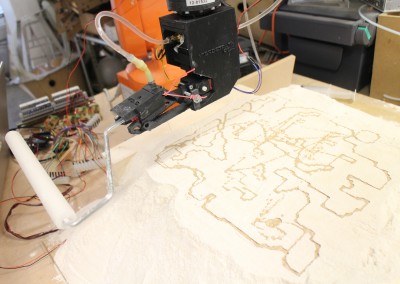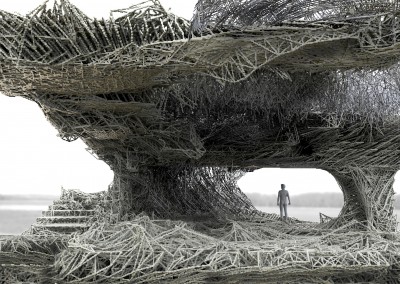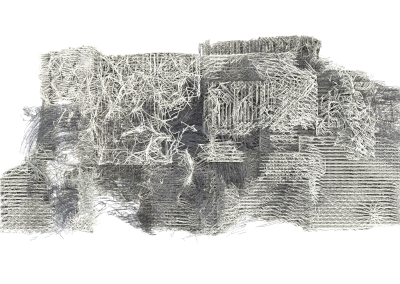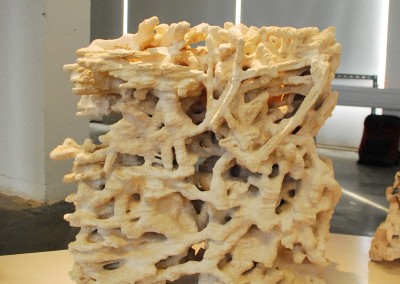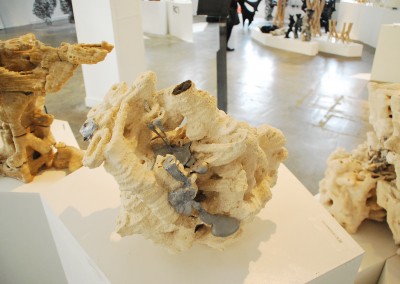BEYOND | call for projects
ENTRY #38 | pixel stone
Project Brief
The project investigates the dichotomy between additive manufacturing fabrication and generative design through computational methodologies. Reconciliation of these two realms as a single bottom-up process in architecture could initiate a paradigm shift in the way building industry works in the future particularly in reinforced concrete structure.
The research objective is to establish a prototypical ‘reinforced concrete’ structure system by integrating digital and 3D printing tool. This design research encompases several phases of excercise and workshops that investigate the Gothic elements, structural analysis, computational tools, material research and the physical fabrication.
Although a wide variety of material has been used in 3D-printing, they all shares one common trait; they all only work in compression. This put a limit into the produced object to perform in tension. Like masonry and concrete construction, the only solution to surpass this problem is to have reinforcement embedded within the structure itself.
Modern architecture solved this problem by the invention of reinforced concrete, in which metal reinforcement bars are layered within the concrete mass to perform in both tension and compression. This solution enables builders to design in a more robust and versatile way.
MICROSTRATA researches fabrication technique to create artificial sandstone with casted rebar, reinventing reinforced concrete. The computational logic of agent-based algorithm is employed in the creation of interconnected, fine networks of venation with high-resolution according to tension structural data. The idea of reinforced concrete is reinterpreted into metal casting technique which results in tension networks with structural performance adequate to that of conventional rebar. Compression blocks are fabricated by additive manufacturing method with high precision, leaving interconnected networks of cavities for tension material casting.
MICROSTRATA investigate micro-organization system, turning sand into performative structures. Sand is an abundantly available substance with high potential for compression-based construction. Considering the micro unit of a grain of sand, MICROSTRATA researches into an optimized method of architectural scale 3D printing in respond to material behaviour in the creation of high resolution structure. With the application of robot, MICROSTRATA algorithm directly transcoded the design as voxel output, generating micro layers of toolpath. From design to fabrication, the data flow does not dwell solely in the realm of virtuality, it is translated into material reality.
Project Credits
Wonil Son
Maho Akita
Syazwan Rusdi
Ornrnuja Boonyasit
Affiliation/Organisation:
Microstrata/The Bartlett School of Architecture/UCL, United Kingdom
Affiliation/Organisation Website :
http://www.bartlett.ucl.ac.uk/architecture

